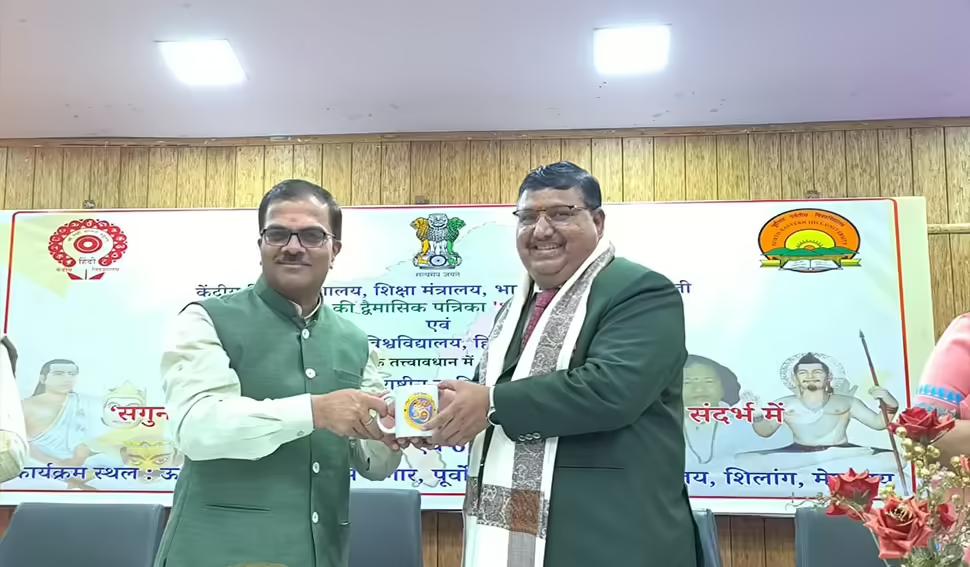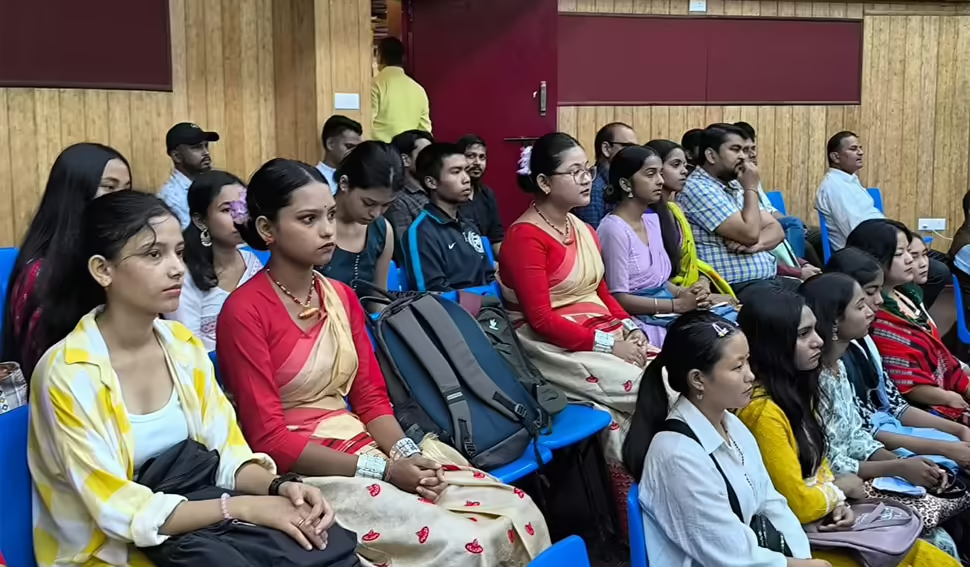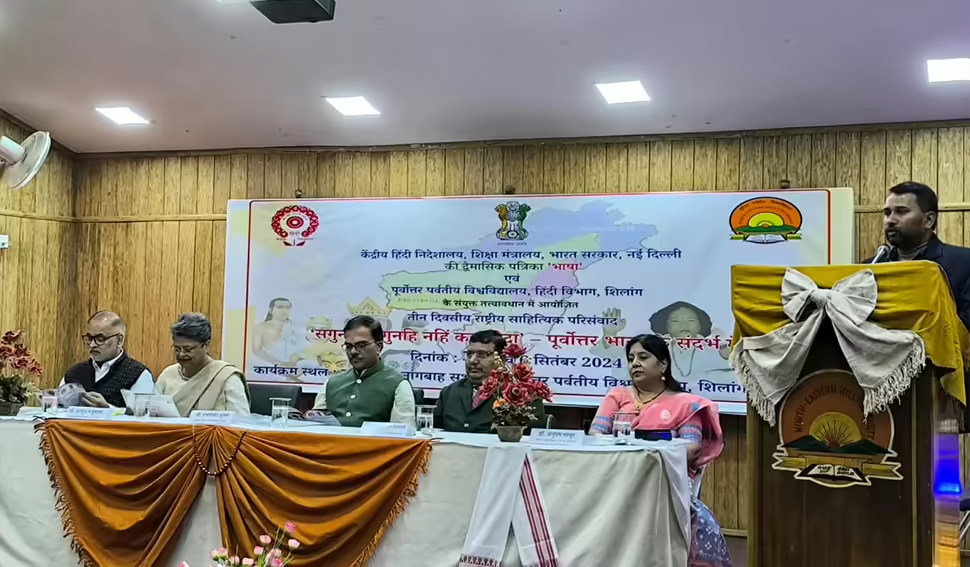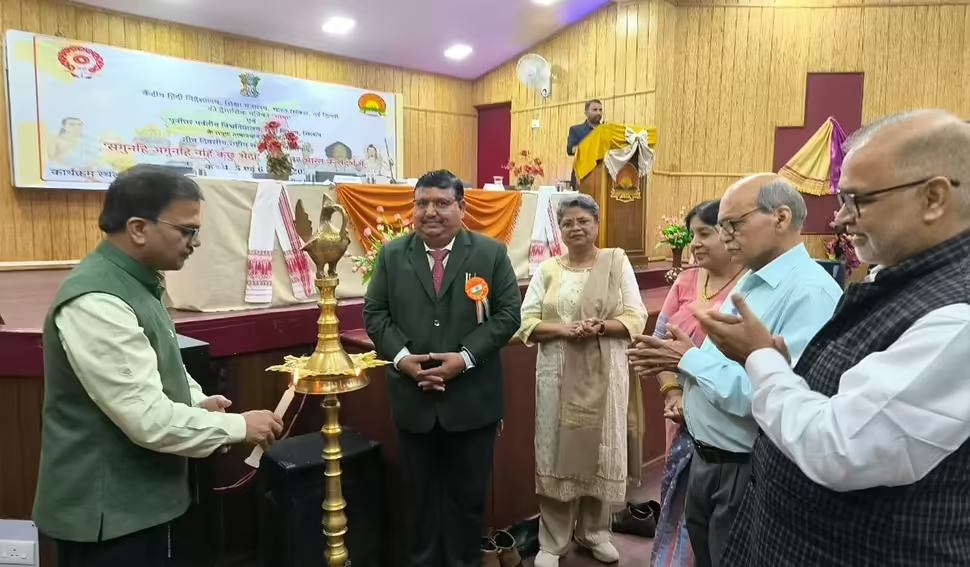NEHU inaugurates a three-day symposium on Bhakti traditions in Northeast India

The Hindi Department of North Eastern Hill University (NEHU), in collaboration with the Central Hindi Directorate, Ministry of Education, Government of India, New Delhi, inaugurated a three-day National Literary Symposium on September 5. The Symposium themed “Agunahi Sagunahi Nahi Kachu Bheda – In the Context of Northeast India”, aims to explore the intersections of Saguna (with form) and Nirguna (without form) Bhakti traditions, particularly in Northeast India.
The event opened with a welcome address by Prof. Madhavendra Prasad Pandey, Head of the Hindi Department, who highlighted the significance of the topic in uncovering India’s spiritual consciousness. Dr. Anupam Mathur noted that while the Bhakti movement was a nationwide phenomenon, the form of devotion in the Northeast differs, where the unity between Saguna (with form) and Nirguna (without form) is evident. Prof. Moon Moon Majumdar considered the topic highly relevant. Prof. Sunil Kulkarni opined that the subject would open new research perspectives in the Northeast, noting that the distinction between Saguna and Nirguna came later and that there is no real difference between the two. He also emphasized the need to reevaluate the literature of saints.

In his keynote address, Prof. Prabha Shankar Shukla, Vice-Chancellor of NEHU, underscored that there is no real distinction between Saguna and Nirguna, emphasizing the crucial role of a devotee’s love in Bhakti. He stressed that faith is vital not only toward God but also toward society and the nation.
The first academic session featured an analytical study by Prof. Sudeshna Bhattacharya on Assam’s Borgeet, detailing the influence of Neo-Vaishnavism and Shankardeva’s teachings. Dr. Ritamani Vaishya expanded on the divisive nature of Saguna and Nirguna distinctions, emphasizing the unity Shankardeva fostered within Assamese society. Dr. Rajeshwar Kumar discussed Shankardeva’s scientific approach to Bhakti, his use of Brajabuli to unite India, and his pioneering role in shaping a cultural renaissance that spanned centuries. He noted that Shankardeva’s teachings continue to resonate and urged India to learn from Northeast India’s spiritual and cultural traditions.

In the second session, research papers were presented by Mousumi Guha Banerjee who elaborated on the unified consciousness shared by all living beings, pointing out that Shankardeva’s establishment of Ek Sharan Dharma not only deepened spiritual devotion but also advanced ethnic integration. Sanjay Yadav explored the Bhakti literature of Northeast India and Mahapurush Shankardeva. Dr. Balram delivered the moderator’s address and stated that it is not possible to cover everything while focusing on the subject. He mentioned that Mahapurush Shankardeva used the Brajabuli language to communicate with the common people. Day 1 of the symposium ended with a cultural program.
The symposium will continue for the next two days with further discussions and presentations from participants.






Leave a Reply